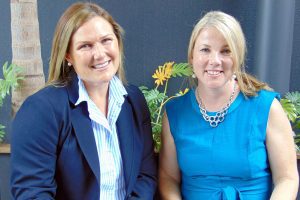[hr] Can we get better movement as we get older? Yes – we can, says physiotherapist and Feldenkrais Method practitioner Madeleine Edgar. [hr]
Many of the problems we put down to ageing are really due to poor usage of ourselves over the years. We don’t have to get worse as we age. Neuroscience has shown us that we
can change pathways in the brain at any age and regain some movements we have lost or may never have had in the first place.
The Feldenkrais Method® is a wonderful way to slowly and gently change those movement or thought patterns which are damaging us and free us to do what we want to do easily and effortlessly. Moshe Feldenkrais D. Sc. (1904-1984) developed his Method after tearing both cruciate ligaments in his left knee in the 1930s. He didn’t want an operation so he focused on ways to walk on that damaged leg but keep his mobility and stability. He then became interested in helping other people to change the habits that were damaging them. He was using Neuroplasticity before it had a name and was way ahead of his time. So we are really working on the brain through the body. He based his work on the developmental movements of babies, exploring and discovering for themselves how to get what they want, not by getting it “right”!
One of the side effects of the Method is pain relief. Habits and protective movement patterns from old injuries are always at the root of our problems and unless we change them, no treatment or exercise program is going to last. When we learn how to release muscles that are working unnecessarily, pain can disappear or at least ease enough for us to move and manage ourselves more efficiently. Our skeletons can be aligned to take our weight and free muscles to move us without interference.
I remember my first Awareness through Movement® class lesson so clearly. 23 years ago, I was lying on the floor doing small, strange, slow movements and wondering what on earth this all meant. I had never heard of any of the BodyMind methods at the time. After 45 minutes I stood up and was stunned by how tall and light I felt. I wanted that feeling for the rest of my life! I am still amazed at how much more I am aware of ‘how’ I move now.
[pullQuote] “One of the side effects of the Method is pain relief. Habits and protective movement patterns from old injuries are always at the root of our problems and unless we change them, no treatment or exercise program is going to last.” [/pullQuote]
The Class method is called Awareness through Movement® or ATM, where you follow the Practitioners’ instructions. Practitioners don’t demonstrate movements as it’s important for you to discover your own best way of moving through life. We work with subtle variations of movement in all the positions the human body can get into so your brain has clearer images of your whole selves. You can also have private lessons, called Functional Integration® or FI, where the Practitioner gently senses what is missing and guides you, fully clothed into other variations of movement. These lessons are particularly tailored to your specific needs. You don’t need any equipment, just the floor, bed or chair and your whole self.
It is especially important for everyone to get down and up from the floor every day. We are not designed to sit in chairs. Use it or lose it is so true. Older people are often afraid of falling, but if you sit on the floor for a few minutes each day it’s no big deaI. If you are unable to sit on the floor, you can try it on your bed. Sitting cross legged or side sitting uses your hips, pelvis and lower back in an efficient way and opens your hip joints. The muscles around that area are then suppler and more flexible, so that if you do fall they can absorb the shock better and your hip won’t break!
[hr]
 Madeleine Edgar is 77 and a physiotherapist, Certified Feldenkrais practitioner and a Fellow of the Australian Feldenkrais Guild. The Guild is responsible for overseeing Feldenkrais professional training programs, code of ethics and certification and is a member of the International Feldenkrais Federation. For information about the Feldenkrais Method, practitioners and classes in your area, go to www.feldenkrais.org.au or call 1800 001 550 (freecall).
Madeleine Edgar is 77 and a physiotherapist, Certified Feldenkrais practitioner and a Fellow of the Australian Feldenkrais Guild. The Guild is responsible for overseeing Feldenkrais professional training programs, code of ethics and certification and is a member of the International Feldenkrais Federation. For information about the Feldenkrais Method, practitioners and classes in your area, go to www.feldenkrais.org.au or call 1800 001 550 (freecall).
Many Health Funds now have Rebates for the Method. Madeleine has written and published two introductory work books for people who are unable to get to a practitioner or classes plus a range of CD lessons to do at home.





















Add Comment